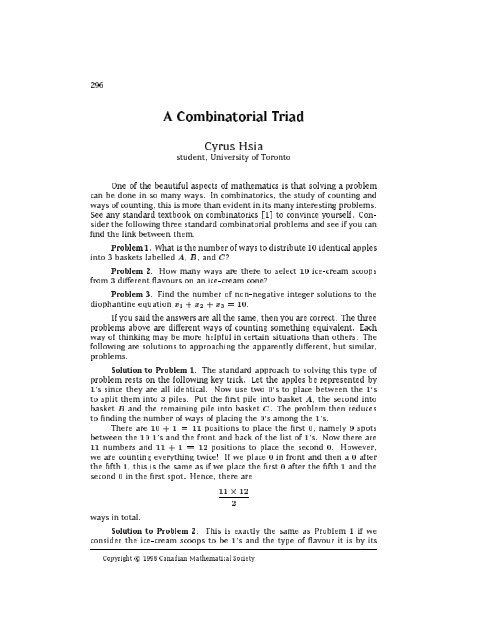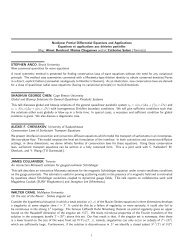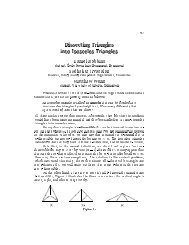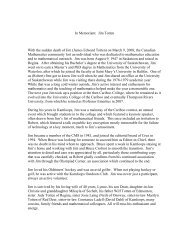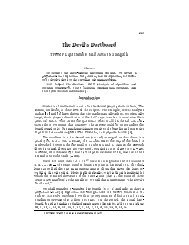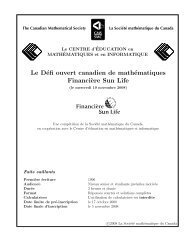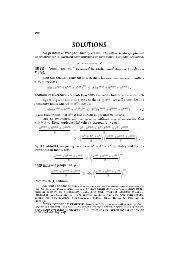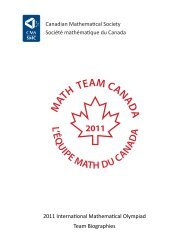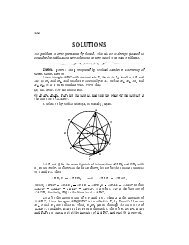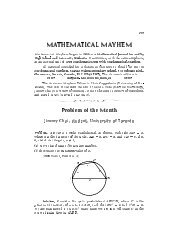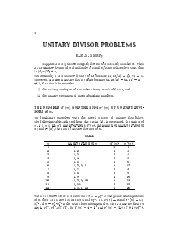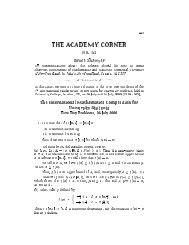Read full issue - Canadian Mathematical Society
Read full issue - Canadian Mathematical Society
Read full issue - Canadian Mathematical Society
Create successful ePaper yourself
Turn your PDF publications into a flip-book with our unique Google optimized e-Paper software.
296<br />
A Combinatorial Triad<br />
Cyrus Hsia<br />
student, University ofToronto<br />
One of the beautiful aspects of mathematics is that solving a problem<br />
can be done in so many ways. In combinatorics, the study of counting and<br />
ways of counting, this is more than evident in its many interesting problems.<br />
See any standard textbook on combinatorics [1] to convince yourself. Consider<br />
the following three standard combinatorial problems and see if you can<br />
nd the link between them.<br />
Problem 1. What is the number of ways to distribute 10 identical apples<br />
into 3 baskets labelled A, B, and C?<br />
Problem 2. How many ways are there to select 10 ice-cream scoops<br />
from 3 di erent avours onanice-cream cone?<br />
Problem 3. Find the number of non-negative integer solutions to the<br />
diophantine equation x1 + x2 + x3 =10.<br />
If you said the answersare all the same, then you arecorrect. The three<br />
problems above are di erent ways of counting something equivalent. Each<br />
way of thinking may be more helpful in certain situations than others. The<br />
following are solutions to approaching the apparently di erent, but similar,<br />
problems.<br />
Solution to Problem 1. The standard approach to solving this type of<br />
problem rests on the following key trick. Let the apples be represented by<br />
1's since they are all identical. Now use two 0's to place between the 1's<br />
to split them into 3 piles. Put the rst pile into basket A, the second into<br />
basket B and the remaining pile into basket C. The problem then reduces<br />
to nding the number of ways of placing the 0's among the 1's.<br />
There are10+1 = 11positions to place the rst 0, namely 9 spots<br />
between the 10 1's and the front and back of the list of 1's. Now there are<br />
11 numbers and 11+1 = 12positions to place the second 0. However,<br />
we are counting everything twice! If we place 0 in front and then a 0 after<br />
the fth 1, this is the same as if we place the rst 0 after the fth 1 and the<br />
second 0 in the rst spot. Hence, there are<br />
ways in total.<br />
11 12<br />
2<br />
Solution to Problem 2. This is exactly the same as Problem 1 if we<br />
consider the ice-cream scoops to be1's and the type of avour it is by its<br />
Copyright c 1998 <strong>Canadian</strong> <strong>Mathematical</strong> <strong>Society</strong>


